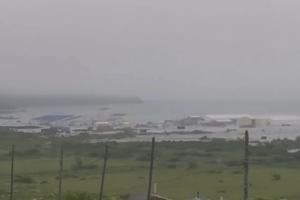The Pacific region recently grappled with the far-reaching consequences of an 8.8 magnitude earthquake that struck off Russia’s Far East, triggering widespread tsunami warnings across multiple nations. This powerful geological event, ranking among the largest ever recorded, prompted immediate responses from authorities and residents alike, underscoring the dynamic and unpredictable nature of our planet.
Initial global alerts cascaded across coastlines from Russia and Japan to Hawaii, the U.S. West Coast, and down to South America, including Chile, Peru, Ecuador, and Colombia, alongside New Zealand. While the immediate threat prompted evacuations and heightened vigilance, many of these warnings were progressively lifted as the danger appeared to subside in numerous locations, allowing communities to begin assessing the aftermath.
Despite the lifting of many advisories, some areas maintained a higher level of caution, notably Chile, which kept its alerts at the highest level for much of its extensive Pacific coastline, and New Zealand, which renewed warnings to avoid coastal waters. These varying responses highlighted the localized nuances of tsunami impact and the critical need for regionalized disaster preparedness strategies.
Tragically, the event was not without human cost. In Japan, one fatality occurred as a woman fell while evacuating, and several others suffered injuries, including heatstroke, while seeking shelter in high temperatures. Russian authorities also reported minor injuries and notable incidents, such as a cancer clinic continuing surgery amidst the shaking, showcasing remarkable resilience.
Beyond human impact, the earthquake also had significant geological ramifications. Shortly after the tremor, lava began to flow from Klyuchevskaya Sopka, one of the northern hemisphere’s largest active volcanoes, located in Russia’s Kamchatka region. This further emphasized the intense seismic activity along the notorious Pacific Rim, often referred to as the “Ring of Fire,” a zone highly prone to both earthquakes and volcanic eruptions.
Historical precedents served as stark reminders of potential devastation. Crescent City, California, a community with a history of experiencing numerous tsunamis, including a catastrophic 1964 event, issued warnings and observed significant wave surges. The memory of past natural disasters reinforces the importance of community education and robust warning systems to mitigate future risks.
As the immediate crisis abated, authorities continued to monitor coastal conditions and advise caution, especially in areas like Hawaii, where officials noted significant water recession, a key indicator of incoming waves. The coordinated international disaster response and the ongoing scientific analysis of this powerful quake will undoubtedly contribute valuable insights to enhancing global readiness for similar future events.





Leave a Reply